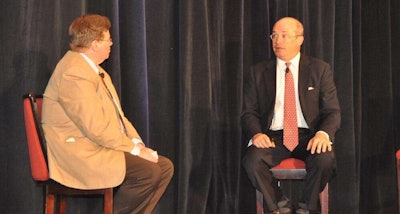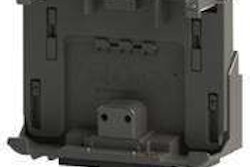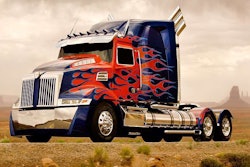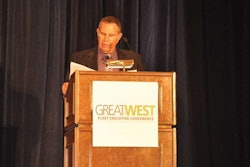 Avery Vise, director of research for Randall-Reilly (left), talks economic outlook for trucking with AVondale Partners’ Don Broughton.
Avery Vise, director of research for Randall-Reilly (left), talks economic outlook for trucking with AVondale Partners’ Don Broughton.At the 2013 Great West Fleet Executive Conference in Las Vegas, Donald Broughton, managing director of Avondale Partners, said he’s slightly more bullish on the outlook for North American freight movement than he was when he addressed the fleet audience at the 2012 CCJ Fall Symposium in December. But, he says, growth remains very sluggish.
Broughton said the United States has never had a period in history with interest rates this low for this long with no growth.
“We are in a slow-growth or no-growth economy, unless you are in one of three basic things that are working, especially in the freight environment: fracking, intermodal or e-commerce,” says Broughton.
In the first quarter of 2013, the S&P was up 14 percent, while earnings only increased 1.3 percent. “That can continue for a while, but obviously that can’t continue for forever. Lessons of Reagan and Thatcher must be relearned. It is proven economic data that lower regulation and lower levels of marginal tax rates lead to higher rates of prosperity and economic growth. When anyone’s government expands, it does so at the expense of the private sector.”
Over the last 12 months, companies have been permitted for and broken ground on five new refineries in the United States, with another six in the permit stage as a result of fracking.
The Panama Canal expansion, set to be complete in 2015, will mean the line of demarcation from 45 percent of the U.S. population being cheaper served to 65 percent through Panama. “It will change freight flows, it will make costs less expensive, but it will still be a longer transit time,” says Broughton.
Broughton says intermodal growth is up 5.4 percent as higher diesel prices is driving freight off the road and onto rail. “Intermodal, that is truck-rail-truck, is reaching all-new highs,” he says.
The industry faces a number of capacity issues, including changes to the hours-of-service rules, the pending mandate for electronic onboard recorders and the Compliance Safety Accountability program.
“I think the HOS change will have little effect initially, CSA will have some effect, but EOBRs will have the biggest effect,” says Broughton. By implementing EOBRs into a fleet, Broughton says, “you will lose 2 to 3 percent of utilization in the first four quarters, but then after Q4 and eventually generate as many or more hours as you ever have, but you have to go through the learning process.”
Broughton also said the next round of trucking failures will set all new records. “When I look at leverage ratios of trucking companies, they haven’t gotten markedly better. Across the industry they’ve gotten worse from an embedded debt perspective. When the winds of ill will come, I believe the next round of trucking failures will break records it will make the previous two records look like childs play.”











